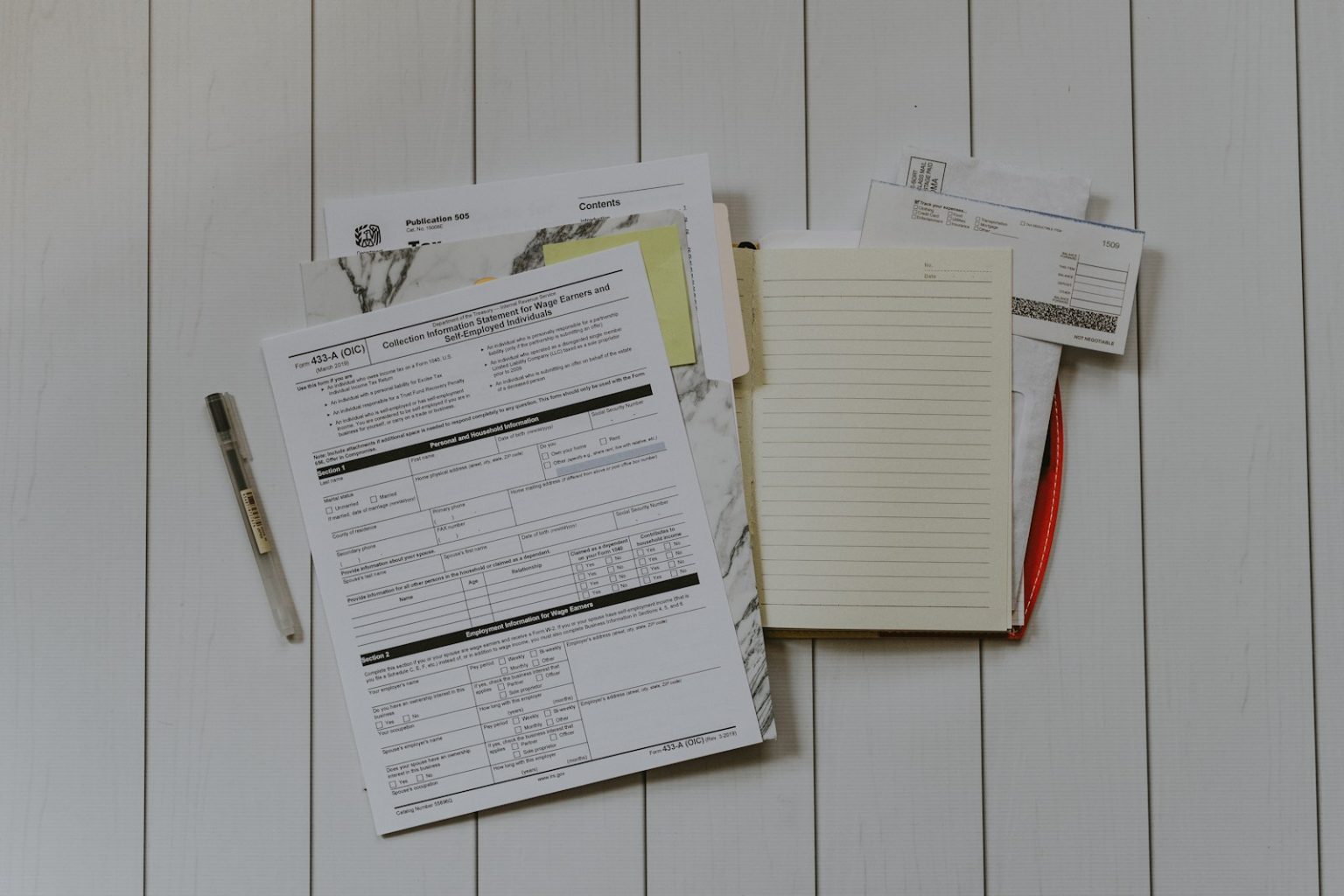Understanding self-employment tax brackets is crucial for freelancers and independent contractors. As these tax brackets change each year, it’s important to stay informed about how they affect your finances. In 2024, several key factors will influence the amount of tax you owe, including new rates and deductions. This article will break down everything you need to know about self-employment taxes for the upcoming year.
Key Takeaways
- Self-employment tax is 15.3% for 2024, covering Social Security and Medicare.
- Only the first $168,600 of earnings is subject to the Social Security tax.
- You can deduct 50% of your self-employment tax when filing your income taxes.
- Use IRS Schedule C to figure out your net earnings and Schedule SE to calculate your tax owed.
- If you earn $400 or more in self-employment income, you must pay self-employment tax.
Understanding Self-Employment Tax Brackets for 2024
What Are Tax Brackets?
Tax brackets are ranges of income that are taxed at specific rates. For self-employed individuals, understanding these brackets is crucial because it helps them know how much tax they owe based on their earnings. In 2024, the self-employment tax rate remains at 15.3%. This rate includes a 12.4% Social Security tax and a 2.9% Medicare tax on net earnings.
How Are Tax Brackets Adjusted for Inflation?
Each year, the IRS adjusts tax brackets to account for inflation. This means that as prices rise, the income thresholds for each tax bracket can change. This adjustment helps prevent bracket creep, where inflation pushes taxpayers into higher tax brackets without an actual increase in their real income.
Impact of Bracket Creep on Self-Employed Individuals
Bracket creep can significantly affect self-employed individuals. If their income rises due to inflation but not in real terms, they may end up paying more taxes. Here are some key points to consider:
- Self-employed individuals must monitor their income closely.
- They should be aware of the income limits for Social Security tax, which is $168,600 for 2024.
- Understanding these changes can help in effective tax planning.
Self-employed individuals need to stay informed about tax brackets and adjustments to avoid unexpected tax bills.
| Tax Rate | Social Security | Medicare |
|---|---|---|
| 15.3% | 12.4% | 2.9% |
By grasping these concepts, self-employed individuals can better navigate their tax responsibilities and plan accordingly.
Calculating Your Self-Employment Tax for 2024
Steps to Determine Net Earnings
Calculating your self-employment tax can seem tricky, but it’s straightforward if you follow these steps:
- Start with your gross income from self-employment.
- Subtract any business expenses and deductions to find your net earnings.
- Multiply your net earnings by 92.35% to get the amount subject to tax.
Applying the 15.3% Tax Rate
The self-employment tax rate for 2024 is 15.3%. This rate includes:
- 12.4% for Social Security
- 2.9% for Medicare
Here’s a quick breakdown:
| Income Level | Tax Rate |
|---|---|
| Up to $168,600 | 15.3% |
| Over $168,600 | 2.9% (Medicare only) |
Additional Medicare Tax Considerations
If your net earnings exceed certain thresholds, you may owe an additional Medicare tax of 0.9%. This applies if:
- You earn over $200,000 as a single filer.
- You earn over $250,000 if filing jointly.
Remember, the self-employment tax is a combination of Social Security and Medicare taxes, which totals 15.3% for 2024. This means self-employed individuals need to be aware of their earnings to avoid surprises at tax time.
Key Changes in Self-Employment Tax Rates for 2024
Social Security and Medicare Tax Breakdown
In 2024, the self-employment tax rate remains 15.3%. This rate is made up of two parts: 12.4% for Social Security and 2.9% for Medicare. Here’s how it breaks down:
| Tax Type | Rate |
|---|---|
| Social Security | 12.4% |
| Medicare | 2.9% |
Income Limits for Social Security Tax
For 2024, only the first $168,600 of earnings is subject to the Social Security tax. This is an increase from the previous year, which had a limit of $160,200. This means that any income above this limit will not be taxed for Social Security, but will still be subject to the Medicare tax.
Changes from Previous Years
- The self-employment tax rate has not changed; it remains at 15.3%.
- The income limit for Social Security tax has increased by $8,400 from 2023 to 2024.
- The additional Medicare tax of 0.9% applies if net earnings exceed $200,000 for single filers or $250,000 for joint filers.
Understanding these changes is crucial for self-employed individuals to effectively manage their tax obligations. Keeping track of these limits and rates can help in planning and minimizing tax liabilities.
Deductions and Credits for Self-Employed Individuals
Self-employed individuals have the opportunity to lower their tax bills through various deductions and credits. Understanding these can lead to significant savings. Here are some key deductions:
Qualified Business Income Deduction
- This allows self-employed individuals to deduct up to 20% of their qualified business income. This deduction can be a great way to reduce taxable income.
Deducting Self-Employment Tax
- Self-employed individuals can deduct 50% of their self-employment tax when filing their income taxes. This means if you owe $2,000 in self-employment tax, you can deduct $1,000.
Other Relevant Tax Credits
- There are several tax credits available, including those for health insurance premiums and retirement contributions. These can help reduce the overall tax burden.
| Deduction/Credit | Description |
|---|---|
| Home Office Deduction | Deduct expenses for a home office used for business. |
| Health Insurance Deduction | Deduct premiums if not on an employer plan. |
| Retirement Contributions | Contributions to retirement plans can lower taxable income. |
Self-employed individuals should keep detailed records of all expenses to maximize their deductions and credits. Consulting a tax professional can provide personalized advice to ensure all eligible deductions are claimed.
By taking advantage of these deductions and credits, self-employed individuals can significantly reduce their tax liability and keep more of their hard-earned money.
Filing and Paying Your Self-Employment Taxes
When it comes to filing and paying self-employment taxes, it’s important to know the steps involved. Self-employed individuals must be diligent in keeping track of their income and expenses to ensure they file correctly.
Required Forms and Documentation
To file your self-employment taxes, you will need several forms:
- IRS Schedule C: This form reports your business earnings.
- IRS Schedule SE: This calculates how much self-employment tax you owe.
- IRS Form 1040: This is your main tax return form.
Additionally, gather any 1099 forms you received, records of your self-employment income, and proof of any deductions you plan to claim.
Quarterly Estimated Tax Payments
Self-employed individuals often need to make estimated tax payments throughout the year. Here’s when to do it:
- If you expect to owe $1,000 or more in taxes for the year.
- If your withholding and refundable credits will cover less than 90% of your tax liability for the current year.
- If your adjusted gross income was over $150,000 for married couples or $75,000 for singles last year.
Using IRS Schedule C and Schedule SE
To calculate your self-employment tax, you will use Schedule SE. This form helps you determine how much you owe based on your net earnings. Remember, you can deduct half of your self-employment tax when filing your income taxes, which can help lower your overall tax bill.
Being organized and proactive about taxes can save self-employed individuals from surprises at tax time.
By following these steps and keeping accurate records, self-employed individuals can navigate their tax responsibilities more easily.
Strategies to Minimize Your Self-Employment Tax Liability
Effective Tax Planning Tips
To keep self-employment taxes low, individuals can use several strategies. Here are some effective tips:
- Keep detailed records of all business expenses.
- Consider hiring a tax professional to help navigate complex tax laws.
- Stay informed about tax law changes that may affect your situation.
Maximizing Business Deductions
Self-employed individuals can take advantage of various tax deductions to lower their taxable income. Some common deductions include:
- Home office expenses, if the space is used exclusively for business.
- Health insurance premiums, if not covered by an employer.
- Contributions to retirement plans, which can reduce taxable income.
Utilizing Retirement Contributions
Contributing to retirement accounts not only helps save for the future but also reduces current taxable income. Here are some options:
- SEP IRA: Allows for higher contribution limits.
- SIMPLE IRA: Easier to set up and maintain.
- Solo 401(k): Offers both employee and employer contribution options.
By understanding and utilizing these strategies, self-employed individuals can significantly reduce their tax liability and keep more of their hard-earned money.
In summary, effective tax planning, maximizing deductions, and utilizing retirement contributions are key strategies for minimizing self-employment tax liability. Keeping organized records and staying informed can lead to substantial savings.
Conclusion
In summary, understanding the self-employment tax brackets for 2024 is crucial for anyone working independently. The self-employment tax rate remains at 15.3%, which includes both Social Security and Medicare taxes. It’s important to note that only the first $168,600 of your earnings is subject to the Social Security tax, while any income above that is only taxed for Medicare at 2.9%. As a self-employed individual, you are responsible for calculating and paying your taxes, which can seem overwhelming. However, by keeping good records and understanding the deductions available to you, you can manage your tax obligations effectively. Always consider consulting a tax professional to ensure you are making the most of your situation.
Frequently Asked Questions
What is self-employment tax?
Self-employment tax is a tax that people who work for themselves must pay. It includes Social Security and Medicare taxes. If you earn $400 or more from self-employment, you need to pay this tax.
How much is the self-employment tax rate for 2024?
The self-employment tax rate for 2024 is 15.3%. This rate includes both Social Security and Medicare taxes.
Can I deduct any of my self-employment tax?
Yes, you can deduct half of your self-employment tax when you file your income taxes. This can help lower your overall tax bill.
What forms do I need to file self-employment tax?
To file your self-employment tax, you need IRS Schedule C to report your earnings and Schedule SE to calculate your tax.
Do I need to pay self-employment tax if I earn less than $400?
If you earn less than $400 from self-employment, you typically do not need to pay self-employment tax. However, you may still need to file a tax return.
What happens if I don’t pay my self-employment tax?
If you don’t pay your self-employment tax, you may face penalties and interest on the amount you owe. It’s important to pay your taxes on time.







